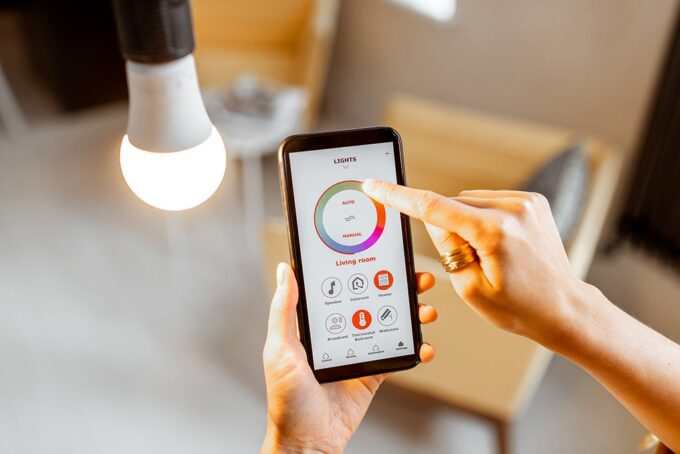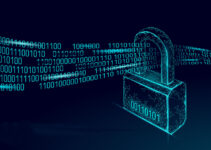The home automation industry has seen steady growth for years. As technology improves and people become more comfortable with the concept, smart home devices are showing up in homes across the country. And now, the industry is looking at some additional growth as a result of the COVID crisis.
Even events as troubling as the pandemic have their silver linings. For the home automation industry, the last two years have introduced a whole new way of life. At the center of this new life is the home. In short, people are now spending more time at home than they used to.
Lockdowns, quarantines, etc. have given people a new opportunity to see their homes as customizable spaces with a lot of potential. It is also fair to say that consumers have started to wake up to how inefficient and insecure their homes really are. Throw in our modern obsession with technology and you have a recipe for home automation success.
Lights on Everywhere

There is no shortage of examples to illustrate what we have learned about ourselves and our homes since the start of the pandemic. An easy-to-understand illustration is found in home lighting. How many of us, over the last 24 months, have come to realize just how often we turn lights on and then leave them on?
It is easy to walk out of a room and forget to turn the lights off. And when you are stuck at home for weeks on end, you may suddenly realize that there are lights on everywhere. All those lights are consuming electricity.
Granted, they don’t consume as much power if you’re using LED light bulbs. But still, lighting an unused space is a waste of money. Home automation gives you several options for controlling interior lighting so that you do not have lights on everywhere. It is such a small thing, but it adds up over time.
Smart Home Control Options
A key component of the smart home paradigm is control. In other words, smart devices can be controlled in numerous ways. A key characteristic of all smart home devices is that they can be controlled remotely. So using the previous example of lighting, here are the different ways you could control it to reduce power consumption:
- Programming – Smart lights can be programmed to turn on and off based on your schedule, the seasons, special events, etc.
- Voice Control – With a smart speaker, smart lighting can be controlled with voice commands. Simply speak and the lights in a given room will turn on, turn off, dim, or even change color.
- Motion Sensing – Smart lighting equipped with motion sensors automatically turn on when someone enters the room. They automatically turn off when no motion is sensed for a given amount of time.
- Mobile Control – Smart lighting can also be controlled using a mobile device. With a smartphone or tablet and an internet connection, you can control lighting from anywhere in the world.
What does any of this have to do with COVID? A lot, actually. In addition to going out less frequently, consumers spending more time at home are more likely to research new technology. They are more likely to invest in electronic gadgets that make the home more comfortable and efficient. It all points to good things for the home automation industry.
The On-Demand Economy

We can’t discuss COVID’s impact on home automation without also discussing the on-demand economy. For starters, the on-demand economy was in full swing before coronavirus came along. But COVID lockdowns put it into overdrive. More people spending more time at home ultimately led to more on-demand economic activity.
Now that the on-demand cat has been let out of the proverbial bag, there is no putting it back in. Consumers want to be able to pull out their smartphones and order groceries the minute the mood strikes them. They expect to be able to shop online and have deliveries show up at the door within a day or two.
Again, what does this have to do with home automation? Everything, when you combine home automation technologies with their home security counterparts. Take the video doorbell, for example. It offers the perfect illustration.
Know When Packages Are Delivered
More online shopping inevitably means more package deliveries. All your major delivery services are now taking pictures of delivered packages and sending notifications to customers. But with a video doorbell, consumers can take package security to the next level.
A video doorbell lets a homeowner actually see packages being delivered in real time. And by integrating a video doorbell with a smart lock and remote access, it is now possible to temporarily let delivery drivers into the home to leave packages just inside the door. Say goodbye to porch piracy.
When it comes to food delivery, a video doorbell lets the homeowner see the delivery transaction as it takes place. Two-way audio allows for communication between homeowner and delivery person, making the transaction a bit more personal. And as soon as the delivery person walks away, the homeowner can open the door and retrieve the delivery.
Incidentally, Vivint says that video doorbells are among the most popular home automation devices on the market right now. Consumers seem to appreciate how such a simple device can offer so much functionality.
Customizing Modern Life

The icing on the cake is our modern desire for a fully customized life. Thanks to technology, we now have the opportunity to customize so many things that were static in years past. COVID lockdowns have only served to increase the desire for customization.
The thing about home automation is that it invites customization across the board. Through programming, artificial intelligence and other features, a fully equipped home is a fully customized home. That is good for homeowners and the home automation industry alike. And to some extent, we can thank COVID for a new and better understanding of the many benefits of home automation.







